-
Schedule your free
consultation online 24/7See available times and get a confirmed appointment anytime
-
The No DrainTummy Tuck
Less pain, quicker recoveryMost experienced in Arizona with the No Drain Tummy Tuck
(Model) -
Thermi minimally invasive
Neck LiftWhen a surgical face lift is more than you need
-
Why Should I Choose Dr. Nachbar?
With a special treat when you read the whole page!
-
ZO Skin Health, the best system for your skin
In our office, or online
-
3 - Dimensional Breast Surgery Simulation
Dr. Nachbar had the first 3-D Breast Surgery Simulator in Arizona. Come see how well our third-generation simulator works!
Laser Tattoo Removal
If you have had a tattoo that you now would like to remove, you have several choices. If the tattoo is small, and there is some loose skin in the vicinity, you may be able to surgically remove the skin containing the tattoo. This will produce a scar, but if it is practical, is the simplest and most complete treatment available. If the skin is somewhat tighter, it might still be an option, either by removing the skin in several steps, by using a balloon to expand the nearby skin, or by moving a flap of skin from a location that has some extra.
Other options include covering the tattoo with makeup and/or another tattoo.
However, if those options are not practical or desired, laser tattoo removal may be your best option. The reason you have a tattoo is because the particles of tattoo pigment are too large for your body to remove. The laser works by sending light through the skin. The skin does not absorb the light, but once the light hits a particle of tattoo pigment, the pigment absorbs the energy of the light. That energy causes a portion of the pigment particle to break off. If the fragment is small enough, the body can then remove it, lightening the tattoo.
Laser tattoo treatment typically produces some lightening of the tattoo with every treatment. After enough treatments, the tattoo may be light enough that it is much less obvious, even so that it no longer looks like a tattoo. How many treatments are required is hard to say in advance, but is affected by the kind of pigment used, the color of the pigment (and thus how well it will absorb the laser light), the density of the pigment, and how completely the tattoo must be reduced for you to be satisfied with the result. I generally tell patients to expect to do between six and twelve treatments, but in any given case, it may be less than six or more than twelve. Treatments are about six weeks apart, to allow healing of the treated area.
Also, there is some discomfort associated with the laser tattoo treatment, just as there was with placing the tattoo. However, fortuntately, the treatements are very quick. Earlier treatments tend to be somewhat more painful than later treatments, because there is more pigment present, so the tattoo absorbs more energy from the laser. Most patients are treated without anesthetic, but some will apply a topical anesthetic. To be effective, these should be applied 1 1/2 to 2 hours prior to treatment, and covered with plastic wrap.
I have included pictures of some patients who have had laser tattoo treatments. As noted, these patients have all had multiple treatments to get the result shown. Depending on the type of tattoo pigment you have, these results may or may not be possible for your tattoo.
| PermaLink Here | |
Laser removal of tattoo on upper right back. Multiple treatments required for this result. | |
| Before | After |
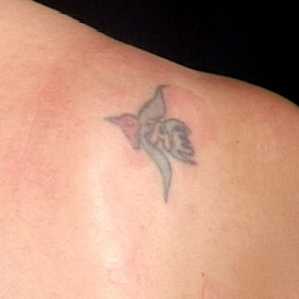
| 
|
| PermaLink Here | |
Laser removal of tattoo on abdomen. Multiple treatments required for this result. | |
| Before | After |
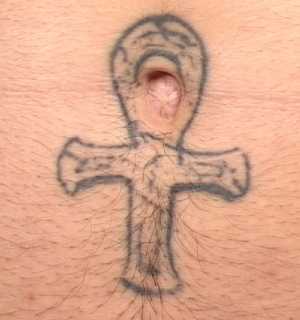
| 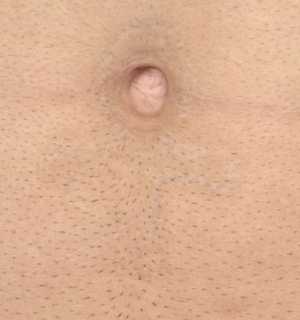
|
| PermaLink Here | |
Surgical excision of hand tattoo. This patient was going into the military, and had to have this tattoo off pronto. Excision allows an immediate result. The after pictures are less than a month later, so the scar is not healed yet. But he entered the military and I have not seen him since! | |
| Before | Less than one month After |
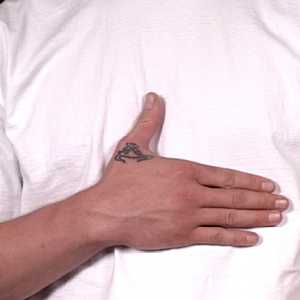
| 
|
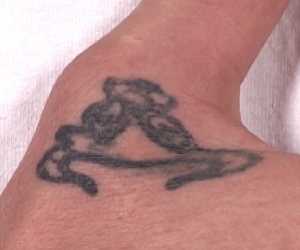
| 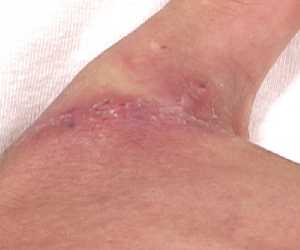
|